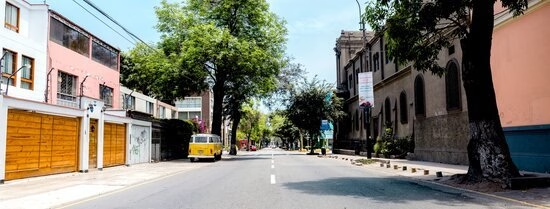During the pandemic, in most countries, schools were closed to limit coronavirus infections. In Peru, the school closures lasted for almost two years. How do people feel about that, and what would citizens decide if they could stand in the shoes of policymakers? This is what Karen Trujillo (Erasmus School of Health Policy & Management) studied. The innovative method she used helps bridge the gap between policymakers and citizens.
Almost two years of school closures is extremely long compared to other countries. Why was that?
"Peru was very exposed because of the pandemic. We saw one of the world's highest COVID-19 death rates relative to the population. The country's healthcare system was under high pressure, and school closures were one of the measures to try and contain the virus. This led to a lot of concern and frustration. People were afraid of the impact on well-being and the future careers of children. Often people have low salaries due to the high levels of informal employment. Only families with a higher income could afford private education, so with school closures, inequality can also increase."
Why did you find it important to consult citizens?
"There is a huge gap between policymakers and citizens, especially in developing countries. I worked for four years as a policy analyst in Peru, and I realized that we were missing a public consultation mechanism. There were some attempts, but the policy proposals shared with the public used to be very technical and mainly published on institutional websites. Then, it is perhaps no surprise that the input received was limited and provided only by a minority.
Policymakers might have to make decisions in less than a day with limited information. We want citizens to experience the perspective of policymakers and make them see and better understand the potential tradeoffs that must be made. So, we did not only give people a set of policy measures to evaluate, but also information about their effects. This way, participants can see the effects of school closures, for example, in public health, children’s well-being and learning loss."

Having citizens experience these dilemmas sounds very valuable, but how do you study this?
"We used Participatory Value Evaluation or PVE. This method allows you to put the citizens in the shoes of policymakers. They are shown several policies that can be implemented to solve important issues, the costs and effects of these policies, and the available budget. Then they are asked to select the policies they would advise the government to implement considering the budget. It has been used to consult people in infrastructure and green energy projects, among others. For instance, during COVID-19, a PVE was conducted to ask Dutch citizens which lockdown measures they preferred to be relaxed. In the study we conducted in Peru in collaboration with my supervisors, about 2000 citizens participated, representative of the population in terms of age and gender.
In this project, we captured over 5,000 written motivations on the preferences of citizens for school opening and mitigation measures. This was very nice as it felt like you were talking directly to the respondents. At the same time, we asked socio-economic and demographic questions such as their education level, region of residence, household composition and financial situation. This allowed us to identify preferences for school opening and mitigation measures by subgroups."
What are some valuable insights for you?
"Not surprisingly, the only subgroup that was in favor of additional hours of classes were people with children. On the other hand, people with a teacher in the family were not in favor of more classes. Also, we found that people from the coast had different preferences than people in the highlands. In the highlands and the Amazon, respondents preferred education to be provided in person (classes in location), whereas on the coast, they preferred hybrid teaching. This was expected as in the coast citizens have less restrictions in the access to internet.
There was a lower preference for measures that are more stringent for students like mandatory face masks and self-tests, while a mandatory third dose for teachers and other preventive measures such as quarantine when infected were the most preferred."
Were people willing to participate in a PVE?
"Yes! We also asked participants if they considered PVE a good method and if they would like it to be used more often in the future. Over 80 percent of the participants wanted to be consulted by PVE in the future. It can help policy makers to understand which measures could be accepted or not and if policies meet the needs of citizens. This way, policymakers can reformulate policies but also improve their communication strategies."
What are the most important takeaways for you?
"I think that the application of PVE in a societal relevant topic as the pandemic and, for the first time in a developing country, is an interesting precedent. It shows how this type of tool can be used as a bridge between policy makers and citizens. I believe that a government should consider citizens’ opinion when implementing a policy, since these decisions might have a direct effect on them. PVE can be used in different sectors, and it could represent a channel to formulate policies and strategies better aligned with the preferences and needs of different subgroups of the population. That is the main goal."
This article is also available in Spanish
- PhD student
- More information
Participatory Value Evalution (PVE) is a new method for evaluating policy options. Do you want to read more about the PVE?
- Related content

